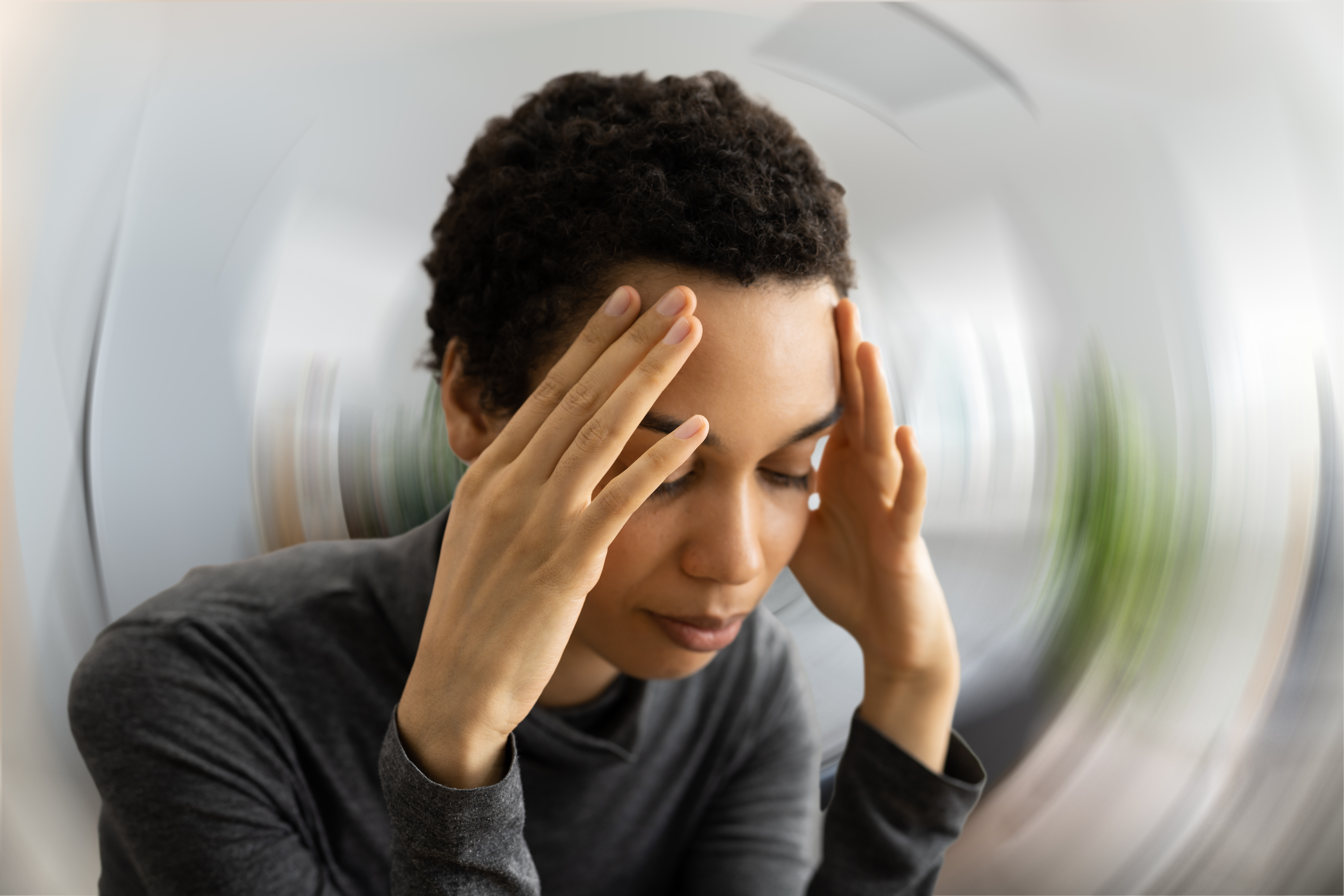
BPPV – What is it?
BPPV is one of the most common causes of vertigo that many people experience throughout their life. Vertigo is a sensation of false motion, often rotational, where you feel like you are spinning. Approximately 30% of all dizziness in older adults 65 years and older are due to BPPV. This disorder can be quite scary and debilitating, but luckily, it’s not life threatening or permanent!
What is BPPV?
BPPV, or Benign Paroxysmal Positional Vertigo, is a common disorder of the inner ear. Benign meaning it’s not serious or life threatening; paroxysmal meaning it suddenly comes on in brief bouts; positional meaning it is triggered by particular head movements and/or positions. BPPV can happen at any age, but it is more commonly seen at ages 50 and older. Fun fact: women are 2x more likely to get BPPV than men! Most people who suffer from BPPV often experience intermittent symptoms that can include:
- Dizziness
- Vertigo that is triggered by head movements or positions (with respect to gravity)
- Light-headedness
- Unsteadiness
- Loss of balance
- Motion sensitivity
- Nausea
- Vomiting
- Nystagmus – a rapid and involuntary movement of the eye
These symptoms are commonly triggered through movements like rolling over in bed, getting in and out of bed, and looking up.
But why do people experience these symptoms? Let’s find out by exploring the ear. There are 3 sections that make up the ear: outer ear, middle ear, inner ear. Since BPPV is a disorder of the inner ear, let’s focus on that section. The inner ear contains 3 important parts: the semicircular canals (SCC) (consisting of 3 loop structures – posterior, anterior, horizontal), otolith organs (utricle and saccule), and cochlea. The SCC contains fluid and fine hair-like sensors that detect the head’s speed and direction of movement. The otolith organs include 2 structures called the utricle and the saccule – these monitor your head movements going up/down, left/right, and back/forth with respect to gravity. Tiny sand-sized crystals called “otoconia” are located within the otolith organs. Though they have a small appearance, these otoconia are actually heavy structures.
In BPPV, these crystals are detached from the otolith organs and end up in the SCC. This is problematic because these heavy crystals now interfere with the normal fluid movement that happens in the SCC. BPPV is categorized into 2 different types: canalithiasis and cupulolithiasis. Canalithiasis is when the crystals are “free-floating” in the fluid. In contrast, cupulolithiasis is when the crystals are stuck on the hair-like sensors in the SCC. When you move your head, the crystals press up against the hair-like sensors, which then sends incorrect messages from one ear to the brain, indicating that the head is still moving. The brain must then take into account both sides of the body to determine what is going on with the head and where it is positioned. With a mismatch of messages from both ears, along with differing messages received from the eyes, the brain gets confused. This leads to symptoms like dizziness and vertigo. In canalithiasis, once the free floating crystals are able to settle to the bottom of the fluid after head movement, that’s when your symptoms will settle (typically a few seconds). In contrast, for cupulolithiasis, since the crystals are stuck to the hair-like sensors, they will keep sending incorrect signals to your brain to indicate that your head is still moving even though it’s not. Your symptoms can only subside once you move your head out of that position.
What causes BPPV?
Most BPPV cases are idiopathic, meaning they have no known cause. BPPV can also be caused by a minor or severe head injury, by disorders that damage or cause inflammation to the inner ear, or from degeneration of the inner ear structures due to the natural aging process. Other risk factors of BPPV can include having a vitamin D deficiency, diabetes, osteoporosis, hypertension, and migraines.
If you experience any symptoms outside of the ones mentioned above, please visit your family physician to discuss other possible diagnoses. Unusual symptoms can include:
- A new, different, or severe headache
- Fever
- Double vision or any loss of vision
- Hearing loss
- Ringing in the ears (tinnitus)
- A feeling of fullness in your ears
- Problems speaking normally
- Leg or arm weakness
- Numbness or tingling
- Loss of consciousness
- Difficulties walking
- Falling
How can BPPV be treated?
Treatment for BPPV is very effective and only takes a few sessions to resolve the condition! Many physiotherapists are trained to perform specific manoeuvres to help get those crystals back to where they belong. Based on information that you provide to your healthcare professional, along with a thorough assessment process, we can figure out which semicircular canal(s) – whether anterior, posterior, or horizontal – those crystals are floating in, and if it is a canalithiasis or cupulolithiasis case. Manoeuvres such as the “Canalith Repositioning Procedure” for canalithiasis, or “Liberating Manoeuvres” for cupulolithiasis are commonly used to treat BPPV. The Canalith Repositioning Procedure involves moving smoothly between specific head positions while holding each end position for 30 seconds. In contrast, the Liberating Manoeuvres require rapid movements to fling the crystals off of the hair-like sensors while holding end positions for 2 minutes.
Another option is to wait for the condition to resolve on its own without any treatment. This typically takes longer than 2 months to resolve. As you will be experiencing unsteadiness and dizziness when having BPPV, this increases the risk of injuries from potential falls; therefore, it is highly recommended to seek professional assistance from your family physician or physiotherapist as soon as possible. Additionally, very short-term use of anti-nausea medication can be used to address the feeling of nausea or motion sickness. However, it should be noted that drug therapy for BPPV has been proven to be an ineffective treatment. Be sure to discuss with your family physician or pharmacist if these anti-nausea medications can be helpful for you.
What happens after BPPV treatment?
For your first session, it is ideal to have someone else drive you to the appointment and back home. It’s important to note that you may feel more nauseous, fatigued, off balanced, disoriented, or suffer from a headache or migraine for 24-48 hours after the treatment is complete. Your healthcare professional will recommend that you sit upright for approximately 20-30 minutes post-session, preferably while sitting inside the clinic. Once you are home, you will want to avoid quick or repetitive head movements for the remainder of the day. So just sit back and relax!
At Boost Physiotherapy, our physiotherapists are ready to assist you with your conditions, even if they are ear-related! If you experience any symptoms of BPPV, be sure to talk to your physiotherapist or family physician so we can work together and figure out the treatment option that best suits your needs! If you have any further questions about BPPV, book an appointment online or call us today at 587-635-555 (South Edmonton) or 780-591-5555 (Stony Plain). Our physiotherapists will be happy to assist you in any way!
BY: gcowan
Uncategorized
COMMENTS: No Comments
